Isabella Fischer's Blog: The Mdantsane Way, page 7
February 8, 2013
Another Shade Of Normal - Celebrating Diversity In Mdantsane

Another Very Beautiful Shade Of Normal - Mdantsane NU 12
On the 1st of February the Mdantsane Way Magazine had the pleasure to attend the ceremony of the handover of a 12 meter container funded by the National Development Agency NDA for the Imizamo Yethu For Elders Group in Mdantsane in NU 12 ( we are working on the article at present).
On this occasion we could witness one more time how much the township Mdantsane is an expression of the young democracy and its values, that has been established in South Africa in 1994.
During the ceremony the guests were surprised with an amazing performance of four beautiful South African children. The performance had been organized by the beneficiaries of the container.

Celebrating Diversity And Different Kinds Of Beauty in Mdantsane
Our young democracy, although a rule of majority has firmly embedded in its constitution the protection of the minorities in the society. For a country, that has no century long history of developing democratic values but has instead been dominated by a regime of suppression this process can be a challenge.
We have published these wonderful pictures for you today because they truly demonstrate how much South Africa has advanced and is constantly making progress on the path of democracy and celebration of diversity.
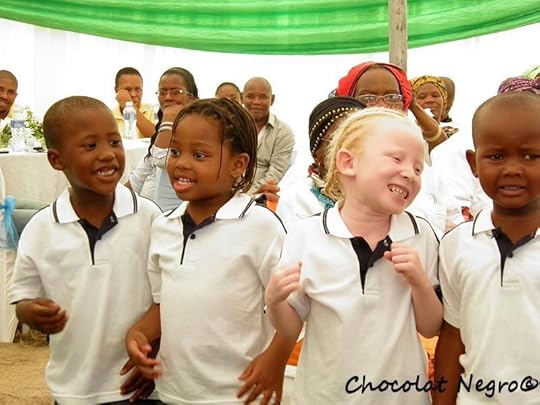
Mdantsane's Beautiful Children Performing At The Handover Ceremony Of The Imizamo Yethu Container For Elder Persons In Mdantsane In NU 12
The topic of albinism is one that lies close to our heart and it is one which we would like to create awareness in the community.
In the South African black population, about 1 in 3900
people have oculocutaneous albinism while in the white population it is
less common (1 in 15 000 people). There are about 10 000 affected
individuals in South Africa.
There is still a certain amount of stigmatization of
people with albinism in the community. For some people affected by albinism mean "bad luck".
The more we were happy to see on that day that prejudice is challenged by many now on a daily basis.
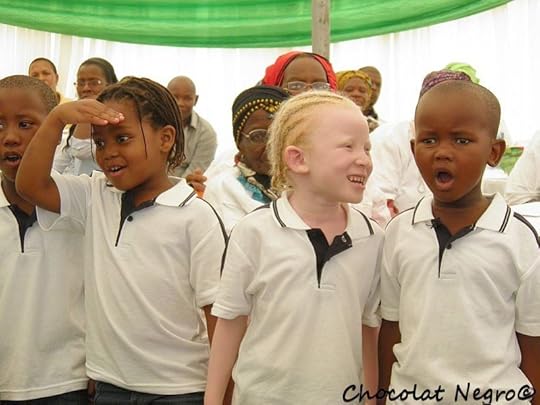
Delighting The Public With Their Performance in NU 12 in Mdantsane
Albinism has been defined as an inherited absence of
pigment (hypomelanosis) that is limited to the eye (ocular albinism), or
involves the eye and skin (oculocutaneous albinism) and in which
nystagmus (fast, rhythmical movement of the eye), decreased visual
acuity and photophobia (fear of light) are present.
Oculocutaneous albinism is more common than ocular
albinism and is inherited as an autosomal recessive disorder. In
addition to poor vision, people with oculocutaneous albinism have
hypopigmented skin which sunburns very easily and is highly susceptible
to skin cancer. Although young children with albinism may be slower to
crawl and walk due to visual problems, it is important to remember that
their intelligence is within the normal range.
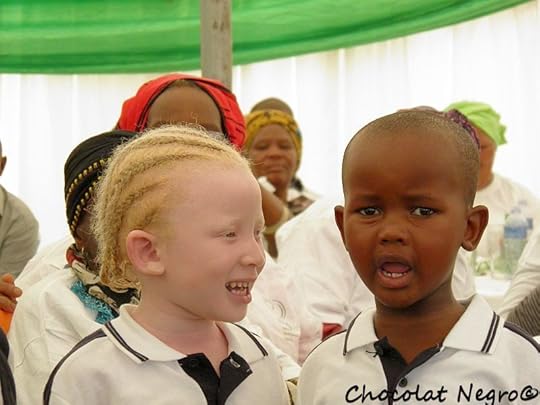
Creating awareness and educating the public about albinism in Mdantsane
Both public education about the
condition and counseling for affected individuals and their families
are required.
A small parent support group in Johannesburg has been
functioning under the auspices of SAIDA with more than 30 members all
over the country.
The objectives of this group are to educate the public
about albinism, to provide support for affected families, and to
support research into the condition. A second large group ( with more
than 200 members) has also been established in Soweto.
We are re-publishing an article, that has caught our attention written by Johannesburg based David Smith for the Guardian on 2 of November 2012. This article profiles the fashion top model Thanda Hopa who has the condition of albinism.
South African model with albinism challenges prejudices
Thando Hopa is wowing the fashion world, but suffered prejudice as a child for condition others have been killed for having
David Smith Johannesburg
guardian.co.uk,
Friday 2 November 2012 18.04 GMT
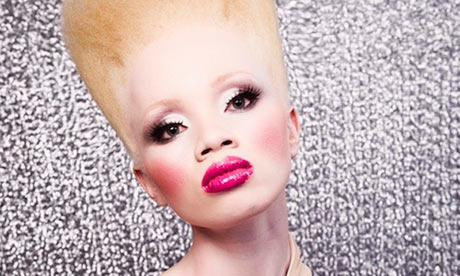
As a child with albinism, Thando Hopa was called names by her peers
and regarded with superstition by the elderly. "Some saw me as good
luck," she says, "and some saw me as bad luck."
Recently all eyes
were on Hopa again. This time she was striding confidently down the
catwalk and earning newspaper accolades as South Africa's "the new face of fashion" and "fashion's new colour".
The
23 year old is among a growing number of models with albinism
challenging prejudice on a continent where the inherited condition –
lack of pigment that affects the eyes, hair and skin – can lead to
discrimination and even death.
Hopa grew up south of Johannesburg
with constant reminders to wear hats and sunscreen to protect her
sensitive skin. She credits a strong and protective family for keeping
her self-esteem intact. A full-time legal prosecutor, she had no
thoughts of modelling until a chance meeting with fashion designer Gert-Johan Coetzee at a shopping mall.
"After two minutes he said, 'Hi miss, are you interested in modelling?' I was open to it. SA fashion week was an overwhelming experience, a different world altogether with so much creativity."
One in 4,000 people in South Africa has albinism. They suffer prejudic from employers and lack of recognition by government, say activists.
Last year the kidnapping of a 14-year-old boy with albinism was blamed
on traditional beliefs.
There are hopes that positive portrayals
of albinism can make a difference. "I really hope so," Hopa said. "I
received some very positive feedback from young girls with albinism. If
you don't see positive examples, you wallow in self-pity. I just hope it
turns into another shade of normal."
Coetzee said he was bowled
over when he first ran into Hopa. "It was amazing, like somebody was
shining a light at the side of my head," he said. "She was beautiful,
with the perfect body and the perfect bone structure. She was glowing
like an angel.
"I've always wanted to do a show with someone with
albinism and never found the right girl. When I saw her everything I was
working on came together. Her skin is as white as milk, stripped of
colour. There are endless possibilities."
Coetzee added: "She was
excited that she can be role model for girls with albinism. It's
something to embrace rather than something to hide."
Hopa follows
Refilwe Modiselle, a model with albinism from Soweto who has been
modelling since age 13 and now the face of South African fashion chain
Legit. "I'm a black girl who lives in the skin of a white person and
that alone should embody what a human being as a whole should
represent," she told the BBC recently.
But
in east Africa particularly, people with albinism are believed by some
to have mystical and healing power, putting them at risk of abduction
and mutilation. Body parts are used in witchcraft or buried under
businesses to bring wealth.
Under the Same Sun, an advocacy and education group, estimated that 71 people with albinism were killed in Tanzania
between 2006 and 2012, while 31 survived machete attacks. In June this
year the body of a man was discovered with several of his body parts
missing.
Richard Mgamba, a Tanzanian journalist who has investigated the trade in body parts,
said the example of Hopa shows "there are two different worlds for
people with albinism: one where they are being hunted and killed, the
other where they are being given opportunities to live like everyone
else".
He added: "In my country they are not given these
opportunities. They are feared and treated as second class citizens. In
South Africa we see a different story – a model with albinism – and for
me that's very encouraging."
http://feeds.feedburner.com/blogspot/...

Published on February 08, 2013 22:52
February 2, 2013
Me And My Vuvuzela
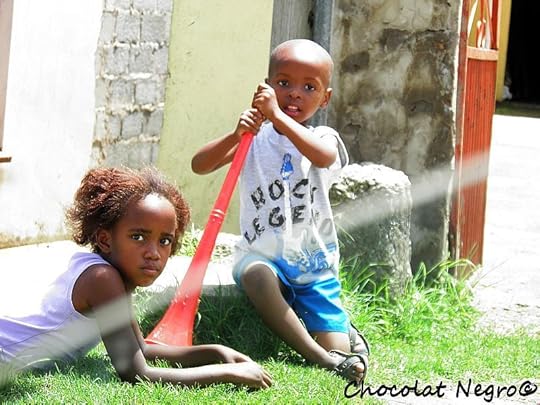
Brother And Sister Playing With A Vuvuzela In NU 12
The Vuvuzela is a small piece of South Africa. Here is a description for overseas readers:
The vuvuzela, also known as lepatata Mambu (its Tswana name), is a plastic horn, about 65 centimeters (2 ft) long, which produces a loud monotone note.
Some models are made in two parts to facilitate storage, and this
design also allows pitch variation. Many types of vuvuzela, made by
several manufacturers, may produce various intensity and frequency
outputs. The intensity of these outputs depends on the blowing technique and pressure exerted.
Traditionally made and inspired from a kudu horn, it is said (although without proof) that the vuvuzela was used to summon distant villagers to attend community gatherings.
The vuvuzela is most used at football matches in South Africa,
and it has become a symbol of South African football as the stadiums
are filled with its loud and raucous sound that reflects the
exhilaration of supporters.
The intensity of the sound caught the attention of the global football community during the2009 FIFA Confederations Cup in anticipation of South Africa hosting the 2010 FIFA World Cup.
The vuvuzela has been the subject of controversy when used by
spectators at football matches. Its high sound pressure levels at close
range can lead to permanent hearing loss for unprotected ears after exposure with a sound level of 120 dB(A) (the threshold of pain) at 1 meter (3.3 ft) from the device opening.
http://feeds.feedburner.com/blogspot/...

Published on February 02, 2013 06:57
January 29, 2013
Nqontsonqa, The Praise Poet Of The Eastern Cape
We have the pleasure to publish today an article written by the 2nd year journalism student Ikhona Pahlane of the Walter Sisulu University in East London. Our informal cooperation with the Media and Journalism Department of the University has allowed us to serve as an incubator for students by publishing their articles in our magazine.
Today's article is a profile of Nqontsonqa, a spoken word artist who claims his girlfriend is a book. He has recently performed at some major events in the Eastern Cape.
Born and bred in Grahamstown, Nqontsonqa, a praise poet, is rocking stages of the Eastern Cape with his thought-provoking and straight-to-the-point poems.
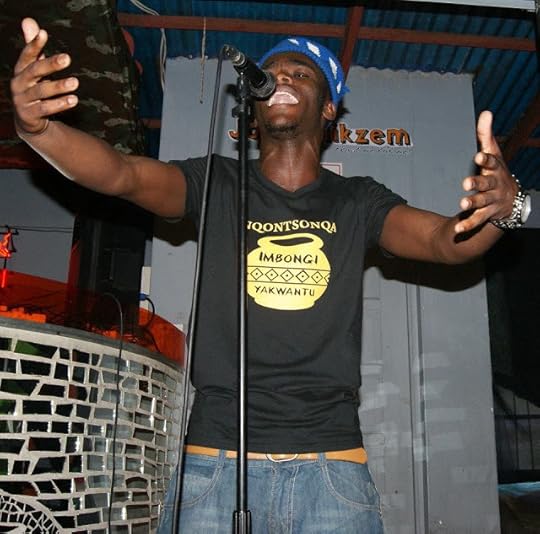
Siphelo Dyongman, also known as Nqontsonqa, inspires
through his poetry and has established a name for himself with his range
of colourful T-Shirts branded Nqontsonqa Imbongi Yakwantu – the praise poet of the people.( Image Ikhona Pahlane)
The 21-year-old Siphelo Dyongman, known by his poetic name Nqontsonqa said his journey began in Grahamstown, at Andrew Moyakhe Primary School where he was doing grade five in 2002.
“I was part of an Inter-Schools Development festival. I stood up and started to recite a poem and that’s how my poetic career began,” he said.
He has recently released his 2nd album entitled “ANC – Ayindim Ndenzeni Compilation” with a hit single Iphupha that has been aired on radio stations such as TruFm and Khanya Fm.
His album has sold approximately 800 copies, under Nqontsonqa Productions. It is available at Vincent Park and Hemmingway’s Musica stores.
Nqontsonqa is a third-year student studying towards his diploma in journalism at the Department of Media Studies at Walter Sisulu University. “I strongly believe that even with art you need to be educated,” he said.
Through courage, curiosity and confidence, Nqontsonqa has become an inspiration to many people through his poetry. Not only that, but he has also managed to make a name for himself that has transformed him into a brand when he introduced the Indoor Sessions, a platform for unplugged art at Walter Sisulu University in 2012.
“I’ve been in and out of the province hosting and headlining shows until I started my own Indoor Sessions held at WSU’s Heritage Site Campus,” said Nqontsonqa.
He has performed at the Steve Biko Ginsberg Easter Festival and at the Buffalo City Metro Municipality Summer Carnival for the past three years in a row. He shared the stage with newcomer Berita at the Buyel'ekhaya Festival in 2012 and at the Chris Hani Choral Competition. He also features on Berita’s album.
Nqontsonqa has also won awards such as the Best Solo Poet at Injongo Productions talent search and a bronze award in the speech and drama competition held by UBOM Drama theatre. He markets his own t-shirts self-titled “Nqontsonqa Imbongi yakwantu”.
The minute he realised his poetry had a strong hold on people he “pulled up” his socks and saw he could make a living out of it. At the same time he lends an educational voice to those who do not have one.
From the first poem he performed, “My girlfriend is a book”, to many others like “Andiphilanga”, Nqontsonqa’s journey is nowhere near the end. – WSU-SNA
Article and Picture By Ikhona Pahlane, Walter Sisulu University
http://feeds.feedburner.com/blogspot/...
Today's article is a profile of Nqontsonqa, a spoken word artist who claims his girlfriend is a book. He has recently performed at some major events in the Eastern Cape.
Born and bred in Grahamstown, Nqontsonqa, a praise poet, is rocking stages of the Eastern Cape with his thought-provoking and straight-to-the-point poems.

Siphelo Dyongman, also known as Nqontsonqa, inspires
through his poetry and has established a name for himself with his range
of colourful T-Shirts branded Nqontsonqa Imbongi Yakwantu – the praise poet of the people.( Image Ikhona Pahlane)
The 21-year-old Siphelo Dyongman, known by his poetic name Nqontsonqa said his journey began in Grahamstown, at Andrew Moyakhe Primary School where he was doing grade five in 2002.
“I was part of an Inter-Schools Development festival. I stood up and started to recite a poem and that’s how my poetic career began,” he said.
He has recently released his 2nd album entitled “ANC – Ayindim Ndenzeni Compilation” with a hit single Iphupha that has been aired on radio stations such as TruFm and Khanya Fm.
His album has sold approximately 800 copies, under Nqontsonqa Productions. It is available at Vincent Park and Hemmingway’s Musica stores.
Nqontsonqa is a third-year student studying towards his diploma in journalism at the Department of Media Studies at Walter Sisulu University. “I strongly believe that even with art you need to be educated,” he said.
Through courage, curiosity and confidence, Nqontsonqa has become an inspiration to many people through his poetry. Not only that, but he has also managed to make a name for himself that has transformed him into a brand when he introduced the Indoor Sessions, a platform for unplugged art at Walter Sisulu University in 2012.
“I’ve been in and out of the province hosting and headlining shows until I started my own Indoor Sessions held at WSU’s Heritage Site Campus,” said Nqontsonqa.
He has performed at the Steve Biko Ginsberg Easter Festival and at the Buffalo City Metro Municipality Summer Carnival for the past three years in a row. He shared the stage with newcomer Berita at the Buyel'ekhaya Festival in 2012 and at the Chris Hani Choral Competition. He also features on Berita’s album.
Nqontsonqa has also won awards such as the Best Solo Poet at Injongo Productions talent search and a bronze award in the speech and drama competition held by UBOM Drama theatre. He markets his own t-shirts self-titled “Nqontsonqa Imbongi yakwantu”.
The minute he realised his poetry had a strong hold on people he “pulled up” his socks and saw he could make a living out of it. At the same time he lends an educational voice to those who do not have one.
From the first poem he performed, “My girlfriend is a book”, to many others like “Andiphilanga”, Nqontsonqa’s journey is nowhere near the end. – WSU-SNA
Article and Picture By Ikhona Pahlane, Walter Sisulu University
http://feeds.feedburner.com/blogspot/...

Published on January 29, 2013 21:38
The Can't Get Car - Wire Art Made In Mdantsane
We came across a very interesting find - entirely made in Mdantsane some twenty years back.
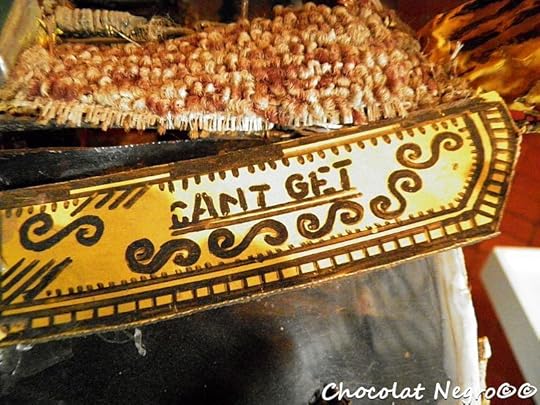
The Can't Get Car - Wire Art Creation By Philipp Ntliziywana
The "Can't Get Car" - so called because one can't get it anywhere is a wire art creation, that was made by Philipp Ntliziywana, a resident of Mdantsane, when he was in his 20's.
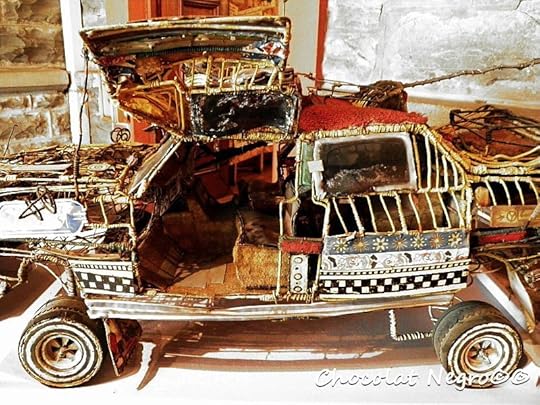
Side View of The Can't Get Car
The car found its way into the King Williams town museum in 1989. It was purchased in June 1989 for a 100 Rand from its maker and is still exhibited there at what is called the Amathole Museum today.

A Scrap Metal Detail Of the Can't Get Car
"It is undoubtedly one of the most unusual and comtepmorary art pieces that found its way into the collection of the museum in recent years," so says the Amathole Museum.
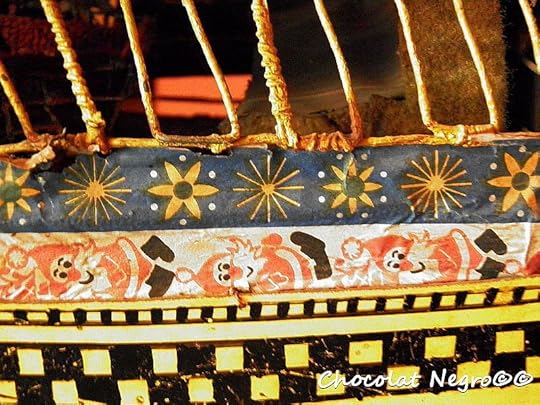
Santa Claus as side decoration
Philipp, the talented artist has included in the construction of the "can't get car" all standard automobile details as well as many unconventional parts and ad-ons. The wheels are fitted with tyres and the windows with perspex windshields. There are front windscreens wipers as well.
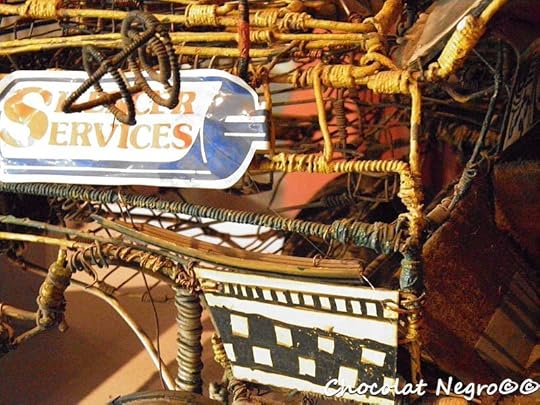
Everything inclusive, engine, battery...... and a lot of extras
The car has front and tail lights, a battery, an engine and a radiator complete with the radiator cap.
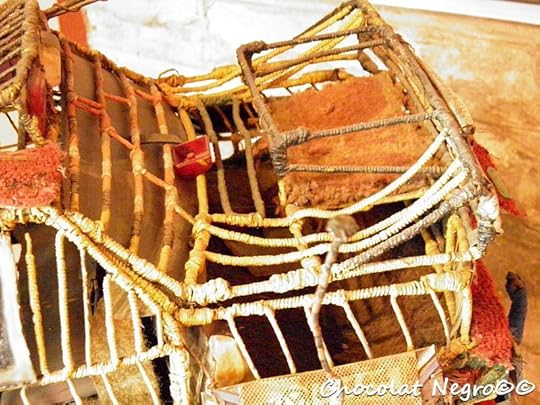
Moreover the car is fitted with a fan, a telephone, a stove and a television set with a large T.V aerial mounted on the roof of the car.
Pimp my ride! Does that sound familiar? With his can't get car Philipp has probably realized more than one of his own dreams.
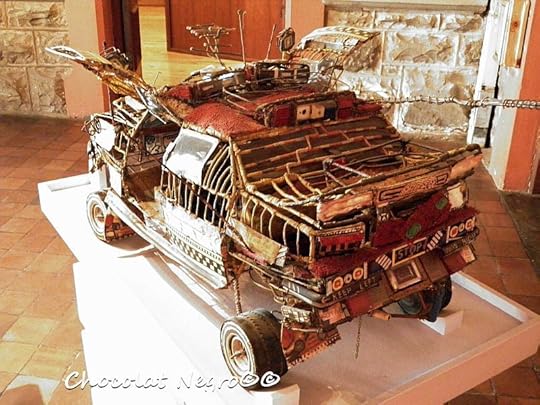
The Can't Get Car In all Its Beauty
Like many more others and simpler wire motor cars, that can still be found in the rural parts of the Eastern Cape, the luxurious can't get car can be directed and manipulated through the help of a fitted steering wheel.
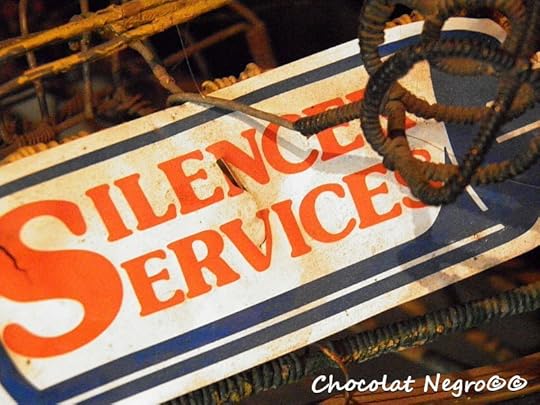
For A Quiet Ride.....
Where is talented Philipp Ntliziywana now? He was in his twenties, so the museum says, when he created this piece of art in Mdantsane. He must be in his late fifties now. Is he still making art, amazing wire creations? We would love to know but probably we will not. One thing is for sure, Philipp was far ahead in time with his creation. His can't get car is largely constructed and crafted from discarded metal and scrap metal pieces. Recycled Art and Design at its finest!
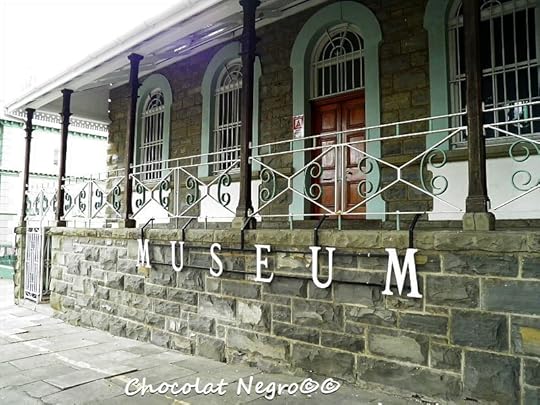
The Amathole Museum in King Williams Town
Where to see it? At the Amathole museum in King Williams Towns.
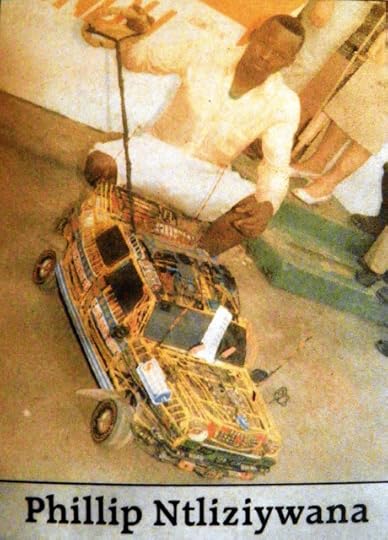
The maker of the can't get car, Philipp a Mdantsane resident!

The Amathole Museum in King Wiliiams Town in The Eastern Cape
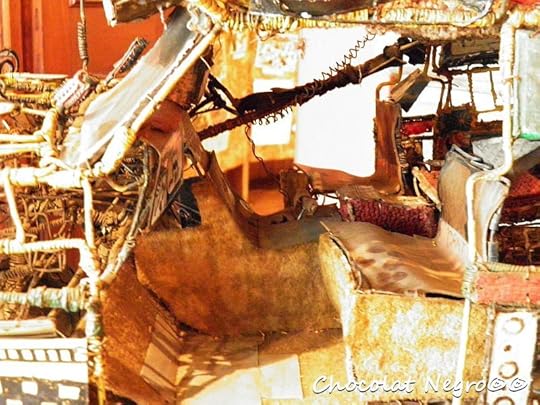
The Drivers Cock pit of the Can't Get Car
http://feeds.feedburner.com/blogspot/...

The Can't Get Car - Wire Art Creation By Philipp Ntliziywana
The "Can't Get Car" - so called because one can't get it anywhere is a wire art creation, that was made by Philipp Ntliziywana, a resident of Mdantsane, when he was in his 20's.

Side View of The Can't Get Car
The car found its way into the King Williams town museum in 1989. It was purchased in June 1989 for a 100 Rand from its maker and is still exhibited there at what is called the Amathole Museum today.

A Scrap Metal Detail Of the Can't Get Car
"It is undoubtedly one of the most unusual and comtepmorary art pieces that found its way into the collection of the museum in recent years," so says the Amathole Museum.

Santa Claus as side decoration
Philipp, the talented artist has included in the construction of the "can't get car" all standard automobile details as well as many unconventional parts and ad-ons. The wheels are fitted with tyres and the windows with perspex windshields. There are front windscreens wipers as well.

Everything inclusive, engine, battery...... and a lot of extras
The car has front and tail lights, a battery, an engine and a radiator complete with the radiator cap.

Moreover the car is fitted with a fan, a telephone, a stove and a television set with a large T.V aerial mounted on the roof of the car.
Pimp my ride! Does that sound familiar? With his can't get car Philipp has probably realized more than one of his own dreams.

The Can't Get Car In all Its Beauty
Like many more others and simpler wire motor cars, that can still be found in the rural parts of the Eastern Cape, the luxurious can't get car can be directed and manipulated through the help of a fitted steering wheel.

For A Quiet Ride.....
Where is talented Philipp Ntliziywana now? He was in his twenties, so the museum says, when he created this piece of art in Mdantsane. He must be in his late fifties now. Is he still making art, amazing wire creations? We would love to know but probably we will not. One thing is for sure, Philipp was far ahead in time with his creation. His can't get car is largely constructed and crafted from discarded metal and scrap metal pieces. Recycled Art and Design at its finest!

The Amathole Museum in King Williams Town
Where to see it? At the Amathole museum in King Williams Towns.

The maker of the can't get car, Philipp a Mdantsane resident!

The Amathole Museum in King Wiliiams Town in The Eastern Cape

The Drivers Cock pit of the Can't Get Car
http://feeds.feedburner.com/blogspot/...

Published on January 29, 2013 00:59
January 24, 2013
Traditional Pondo Dancers
The following images of traditional Pondo Dancers in their ceremonial clothing were taken by Rob Mellin in 1976 in King Williams Town. We are pleased to show more of the work of ex Daily Dispatch Photographer Rob Mellin, who has documented many parts of the Xhosa culture during several decades.
To read more about Rob Mellin click here.
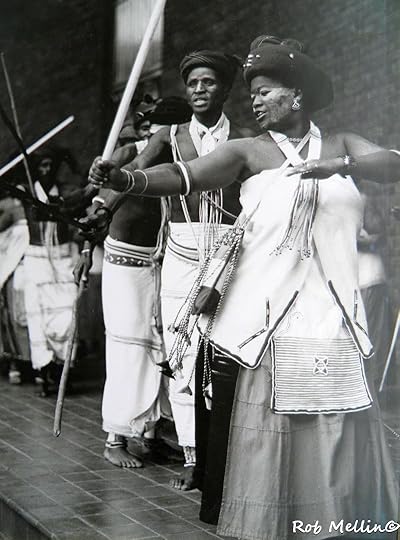
Pondo Dancers in King Willimas Town in the 1970's
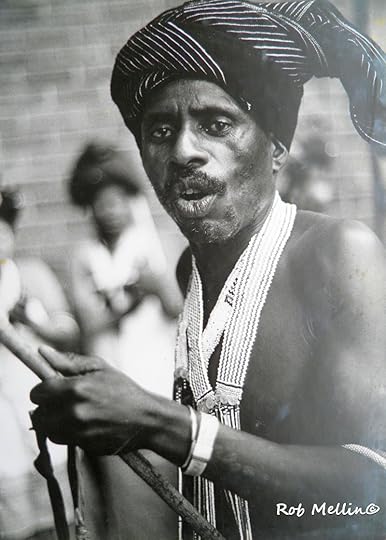
Traditional Dancer
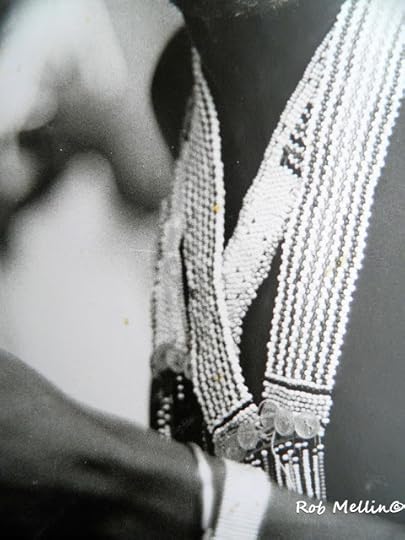
Detail of a traditional beaded necklace worn at ceremonies
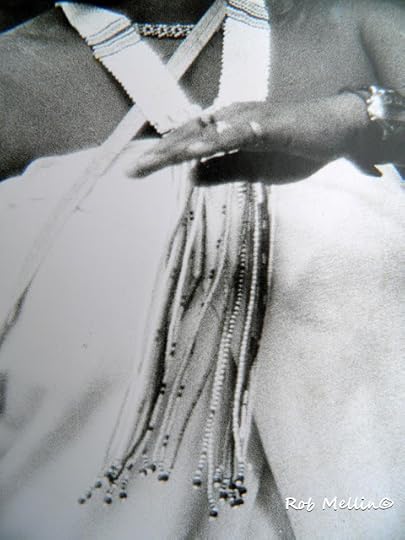
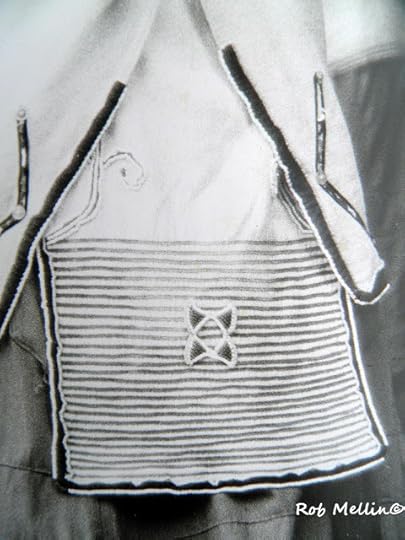
Traditional beaded bag
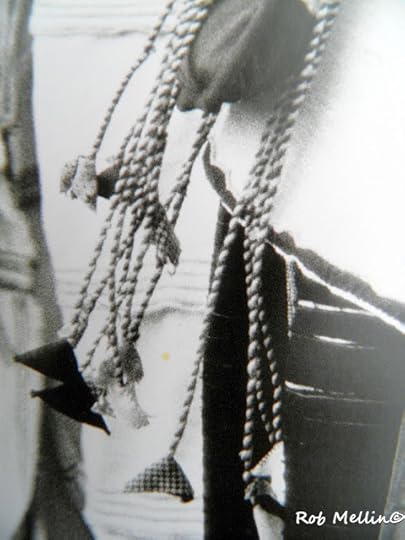

http://feeds.feedburner.com/blogspot/...
To read more about Rob Mellin click here.

Pondo Dancers in King Willimas Town in the 1970's

Traditional Dancer

Detail of a traditional beaded necklace worn at ceremonies


Traditional beaded bag


http://feeds.feedburner.com/blogspot/...

Published on January 24, 2013 23:29
January 22, 2013
Dance And Drama In Mdantsane - The Imonti Arts Company Under V.S.T.C
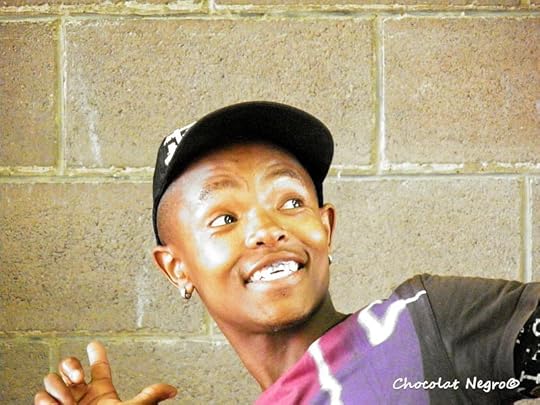
Acting and Dancing In Mdantsane
There is a lot of dance and drama in Mdantsane. You just have to look for it! Some of it takes place at the Mdantsane Arts Center, that is presently going through a revival period.
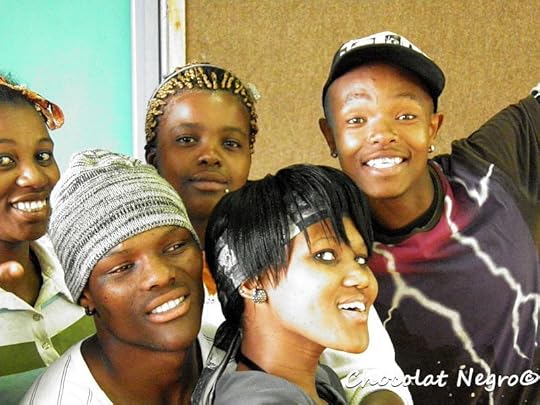
The Imonti Arts Company Under V.S.T.C
On our last visit to the center we surprised the "Imonti Art Company Under V.S.T.C" during a training session. The guys and girls of the Imonti Art Company were busy rehearsing a dance and drama play, that they have created themselves in the studio of the Arts Center.
Their play is a mixture of dance, song and poetry.
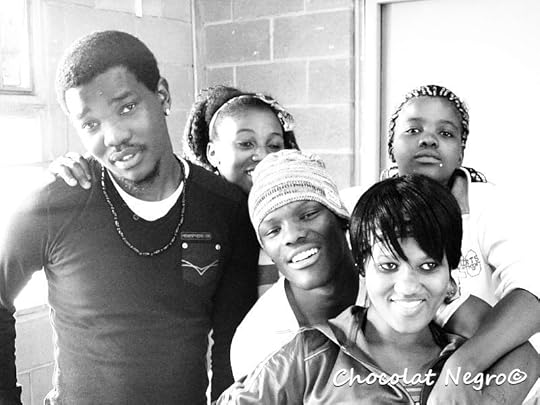
Expressing the spirit of Mdantsane
A little bit surprised by our intrusion into their domain they did however not hesitate a minute to give us a taste of what they were working on. What we saw was pretty impressive!
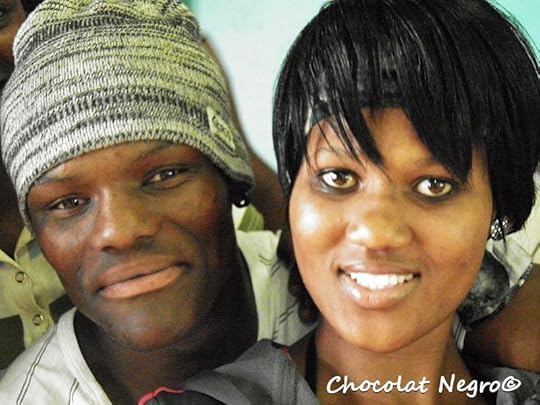
Local Talent Made in Mdantsane
These young Mdantsanians are no amateurs. They have already traveled to Germany and performed there with their group before larger audiences.
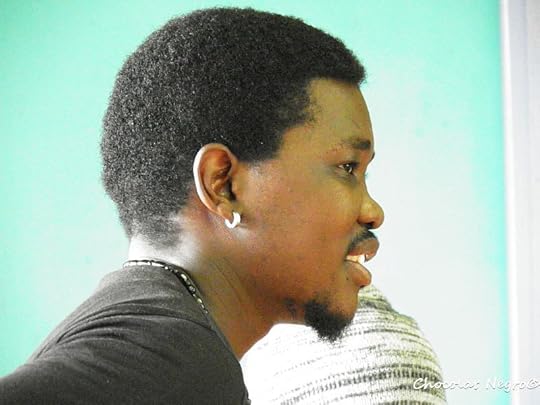
Mandla Sanelisiswe
The group of young people share between them a whole range of talents, that combined make up a contemporary drama and dance performance, that has the power to mesmerize the spectator. Infatuating rhtymn and singing, dancing, stamping feet, mixed with poetry makes you keep your eyes on the actors.
This is no boring drama and dance play, not one of those plays where you politely wait until the end has come and you take a deep breath when outside, lucky that you can go home. No, this is not one of those. This is Mdantsane's power and talent combined and you just wish they must continue to perform in front of you..
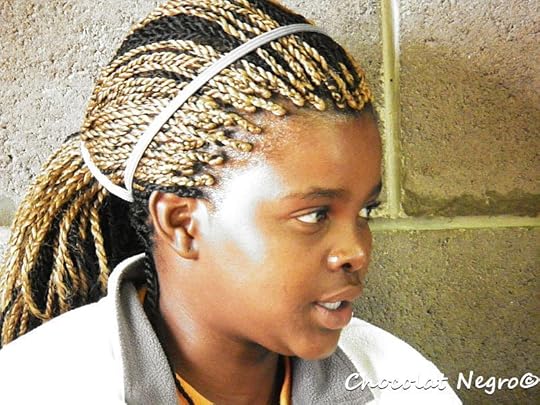
Member of the Imonti Arts Company
The group's performance covers topics that arise from the neighbourhood, they live in. Their stories talk about the daily life in Mdantsane.
And nobody is more qualified to talk about it than they are.
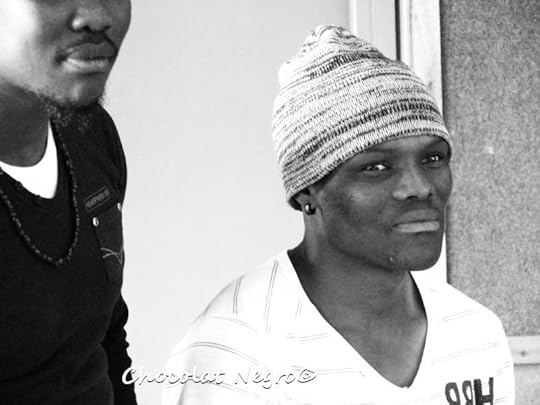
Masindwa Ntsingisela (right) is the poet of the group
After the rehearsal Masindwa Ntsingisela said: "Can I say a poem for you?"
His poem talked about young people that have choosen the way of crime as their career.
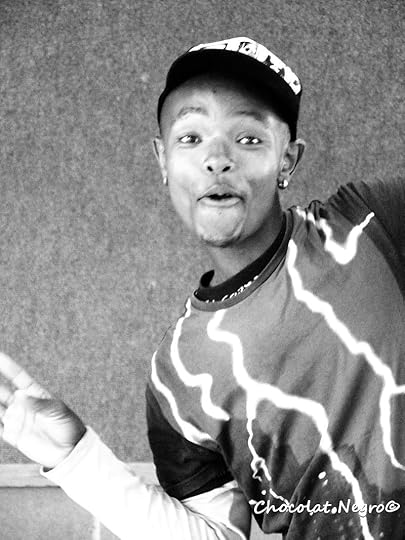
Born to be a dancer
Looking at the images we have uploaded for you, you can even feel a little bit of that intensity and passion, that showers the spectator.
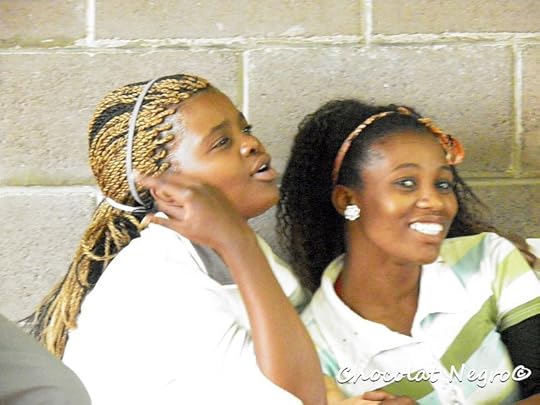
You will be able to see more of them in our documentary movie "Mdantsane - Another African Story".
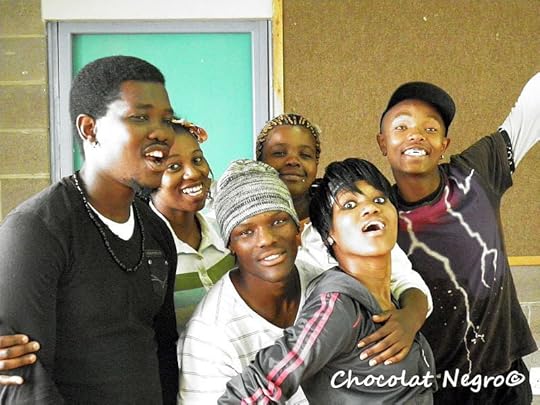
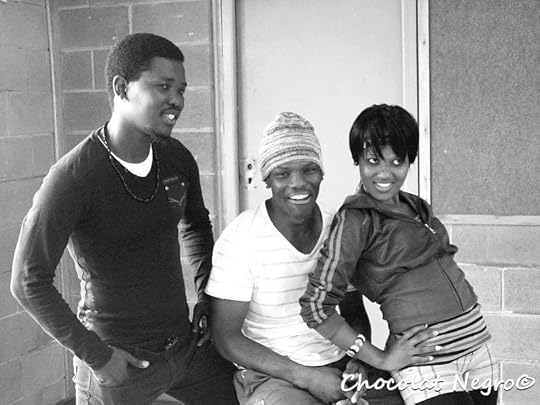

http://feeds.feedburner.com/blogspot/...

Published on January 22, 2013 23:54
January 18, 2013
Nguni - The Cattle Of The Xhosa People
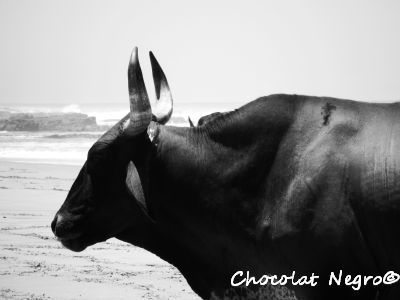
Nguni Cattle at the Wild Coast
The Nguni cattle breed is indigenous to Southern Africa.
A hybrid of indigenous and Indian cattle they were introduced by the
Bantu tribes of southern Africa from the north of the continent. They
are medium sized, adapted to grazing on the Highveld. The ancestors of Nguni cattle were brought by the Xhosa, Zulu and Swazi people, during their migration to Southern Africa
between 600 and 1400 AD.
Since then, the Nguni have played an
important social and economic role in the development of these societies
and are used as a bride's dowry (lobola).
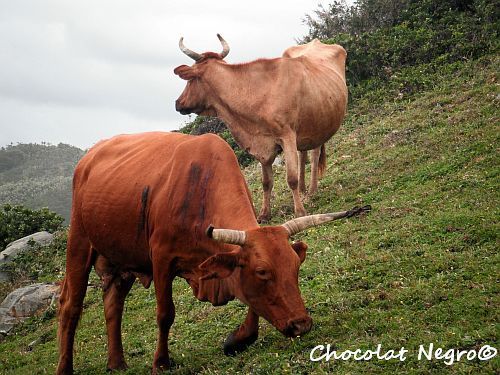
Nguni Cattle on high mountain slopes at the Wild Coast
Nguni cattle are known for their fertility and resistance to diseases. They are characterised by their multicolored skin, that can show
many different patterns, but their noses are always black-tipped.

The Wild Coast - The Land of the Xhosa People
The number of animals held by a village or an individual determined much of their importance to the rest of the world.
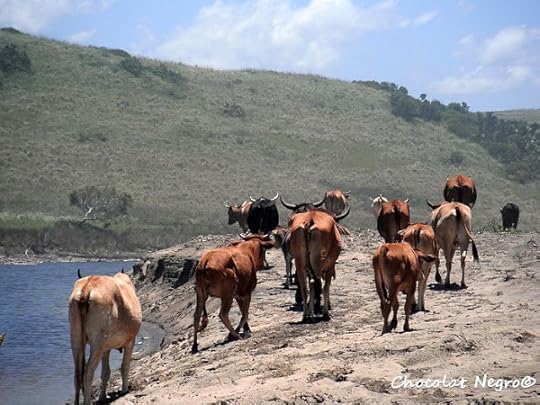
Nguni Cattle on their way back to the mountains after a lazy morning at the beach
The skins of the Nguni cattle have many different patterns and colors such as white, brown, golden black and yellow, dappled and spotty.
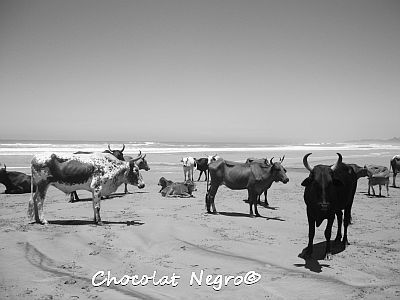
Nguni cows at the beach at the Wild Coast
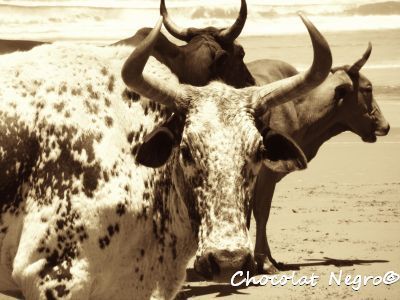
Spotted beauty
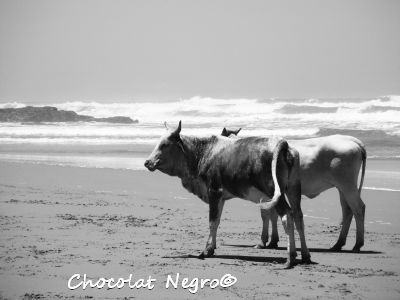
Resistant to many diseases
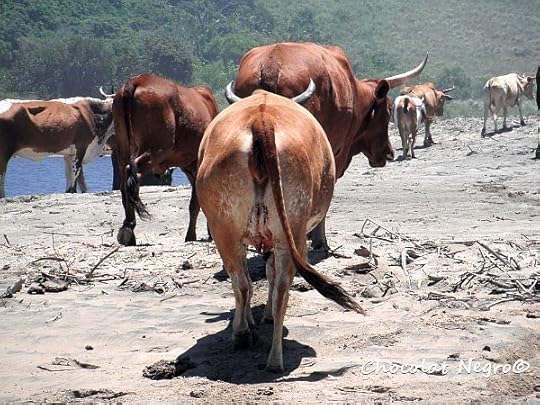
Nguni on their way home

Africa's Pride
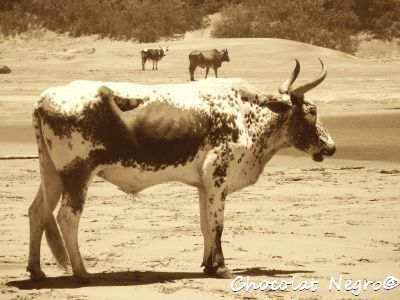
The Nguni are famous for their skin
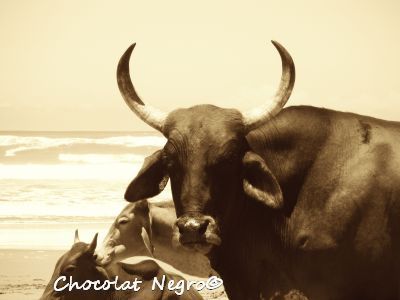
To understand the culture of the Xhosa people better one has to reflect on the value and importance of cattle in the African society in general.
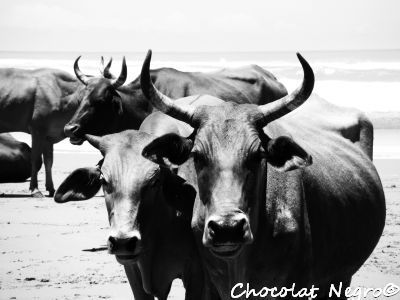
Even today in urban regions like Mdantsane and other towns cattle can be seen on the streets. They are slaughtered on ceremonial days and on most of all important family happenings.
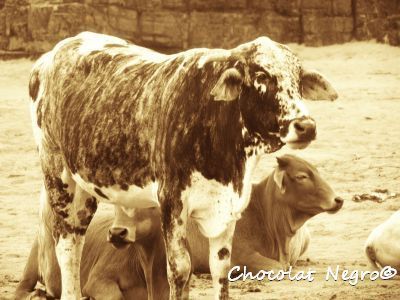
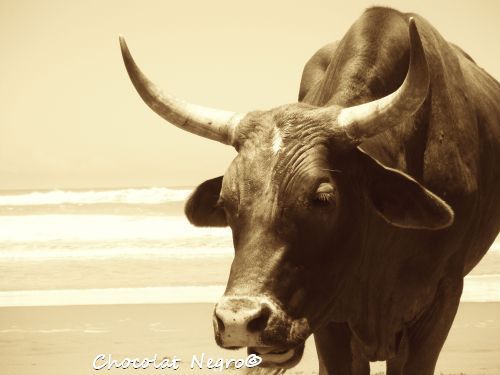
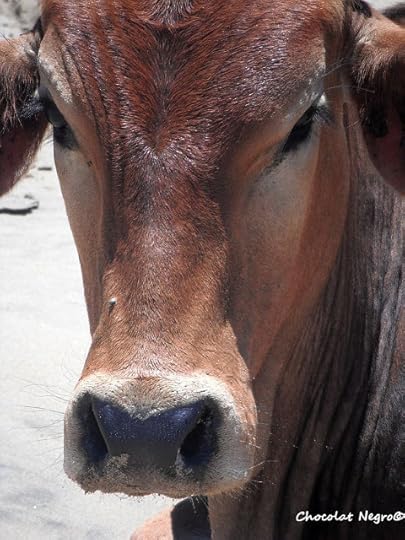
http://feeds.feedburner.com/blogspot/...

Published on January 18, 2013 23:51
January 11, 2013
Incede Womens Project - Art And Recycling In Mdantsane
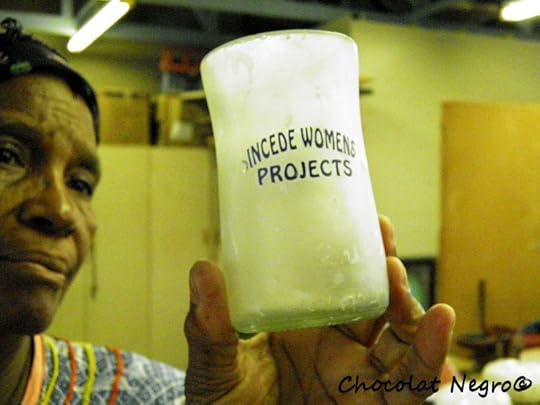
The Incede Womens Project recycles glass bottles and turn them into beautiful liquor glasses
Nomunde (Patience is her English name, so she tells us) and Zameka are the two savvy ladies behind the Incede Women's Project. The Incede Womens Project's workshop is located in a large room at the Mdantsane Arts Center.
Several women of Mdantsane, concerned about the situation and the future of young people in this country have founded this project a couple of years ago, with the intention to help young people to gain skills in the art sector and thereby allowing them to earn a little income.
Incede is in the lucky position to be now funded by the Department of Arts and Culture. The efforts of these women, to help create a better community and trying to keep the young people of the streets have been finally recognized.
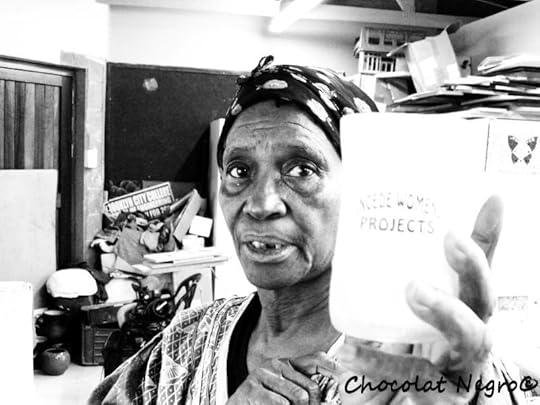
My name is Patience but I am actually not patient at all, she says!
The Incede Womens Project creates a variety of products with very different materials including pottery ware, mosaic work and has started a line of products, that are made from recycled glass, but we are concentrating in this article on the pottery products, that the women design.
The products are strongly influenced by the Xhosa culture and the local tradition of the Eastern Cape but they also incorporate many other non-typical Xhosa elements of daily life.
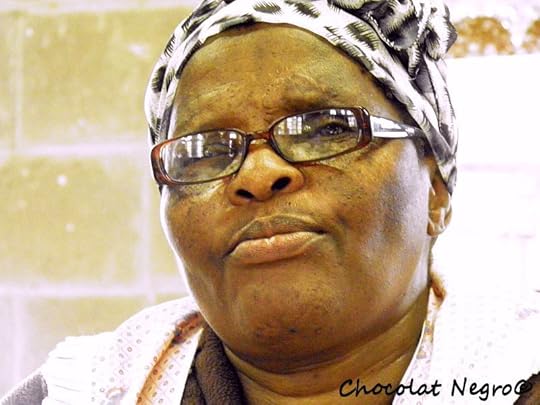
Zameka - a strong vision
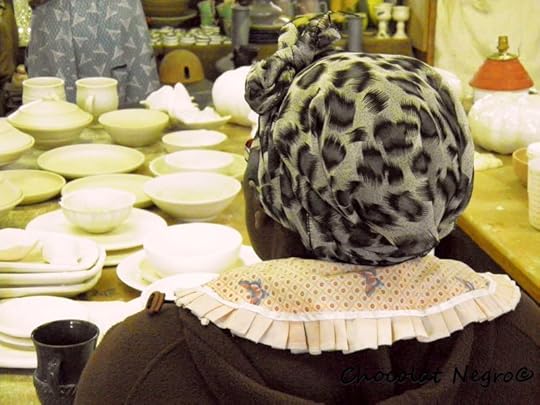
Zameka at her working area in front of pottery wares, destined to be painted and glazed
The workshop at the Mdantsane art center seems large to us, but the ladies say it is still not big enough. It is used by many young people, who come there after school to paint or learn the skill of pottery.
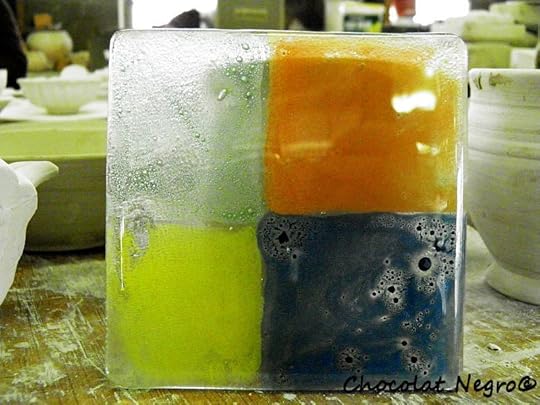
Beautiful, colorful handmade and completely RECYCLED glass tiles
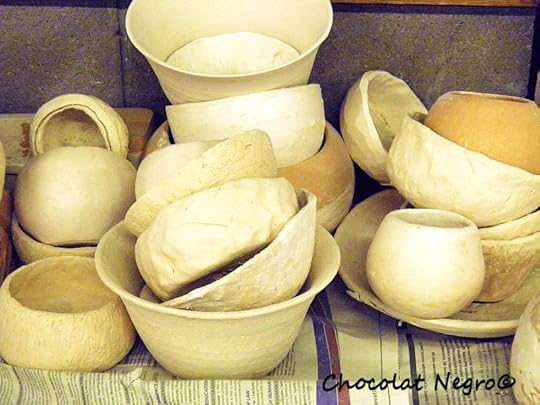
The raw material is bought in Gonubie, a little coastal town outside of East London.
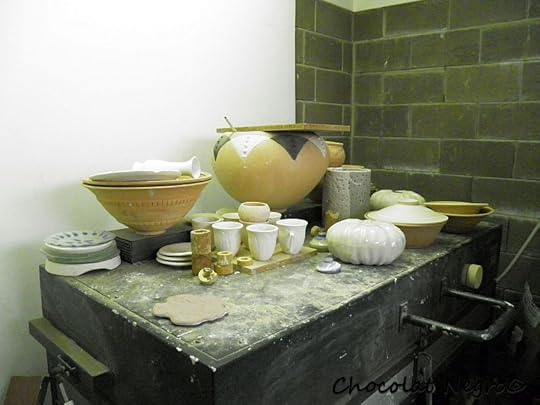
The project is well equipped and has all the material needed at its disposition, but the women say what they profoundly lack is marketing, business and selling skills.
"Once our products are finished, they rest on the shelves in the arts center, Patience says, we don't know how to get them to the clients and we don't know how to attract clients."
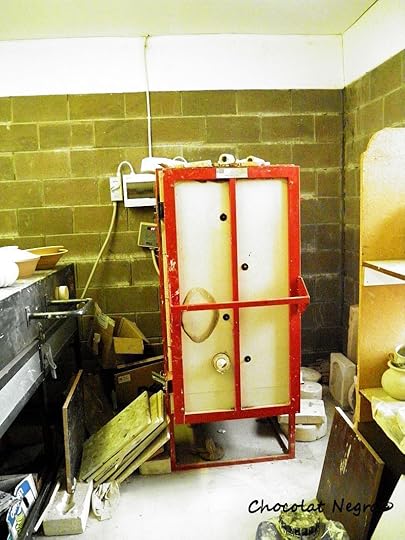
The Kiln
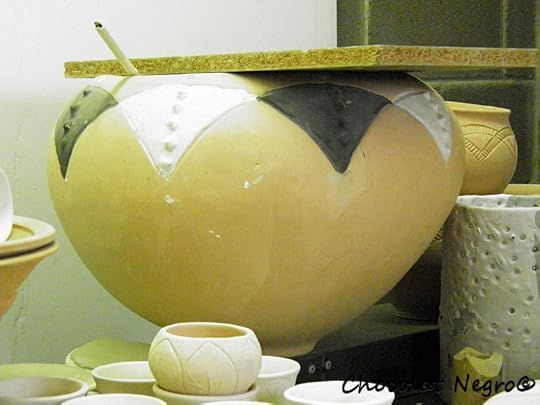
Unfinished products
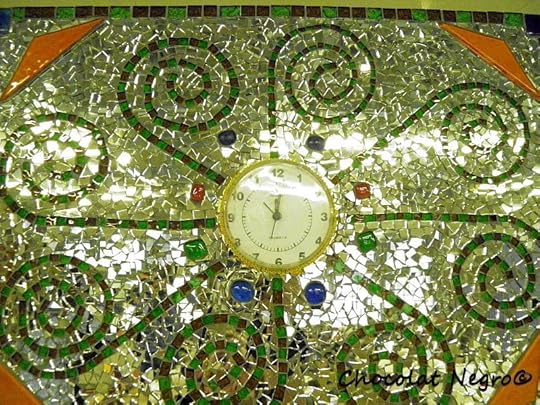
A mosaic clock
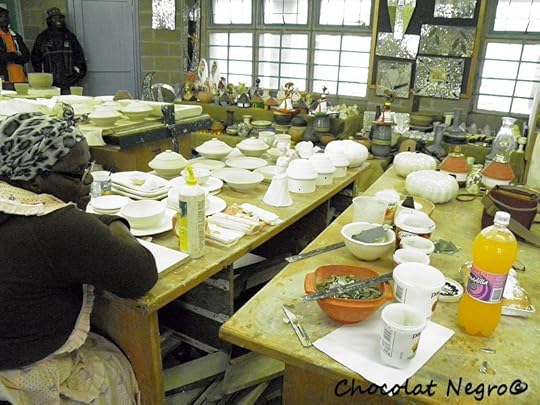
The large workshop of the Incede Womens Project
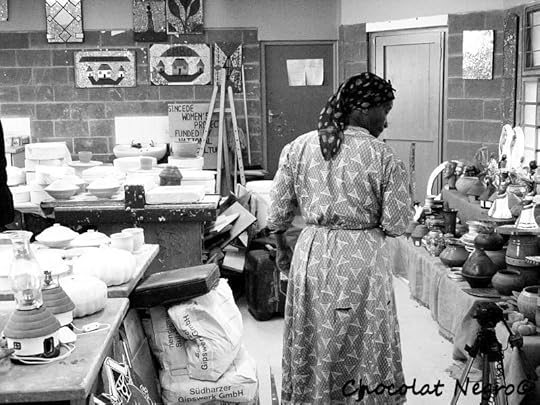
Patience at work
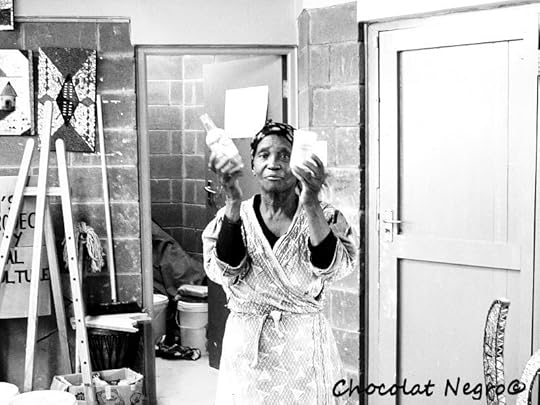
The women belief in their project
The women who have founded Incede believe in the power of work and that if one learns a skill it changes one's outlook on life.
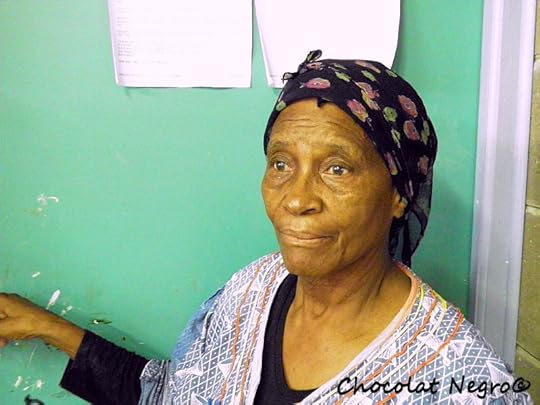
Learning something adds a sense of worth and self respect to your life
"If you are not working, you feel useless. You feel useless and you do not have an income. Sometimes this can not be changed easily because of external circumstances. But if you learn a skill, even if you still have not an income you feel proud and more re-assured of yourself than before," says Patience.
"You have added value to yourself. Life is also about understanding your own value. May be your income will come later or there is the possibility, that you will find money through the skill you have learned in another way, that you have not thought of!"
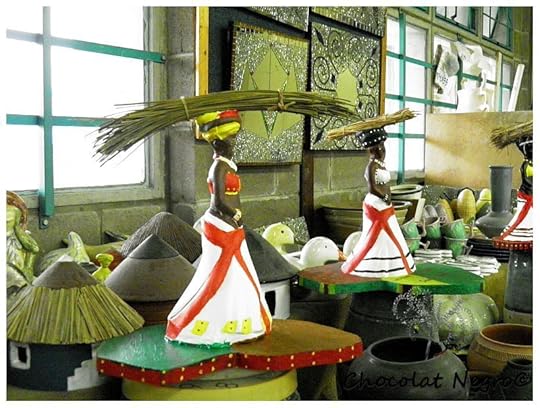
Many women in their later years in life have a deep concern for the future of the young people in South Africa.
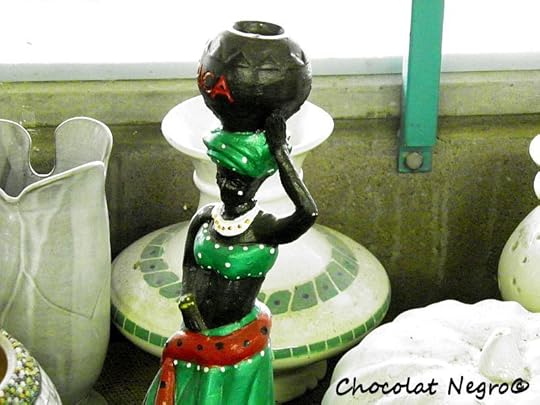
Representing the tasks of daily life in the Xhosa culture
If the old traditions die the teachings of these traditions reserved for the young people die as well. But it is a fact of life that certain traditions will die because the effort it would take to uphold them is too big. New ways have to be found to establish values and recognize the value of life. Art can be one of these ways.
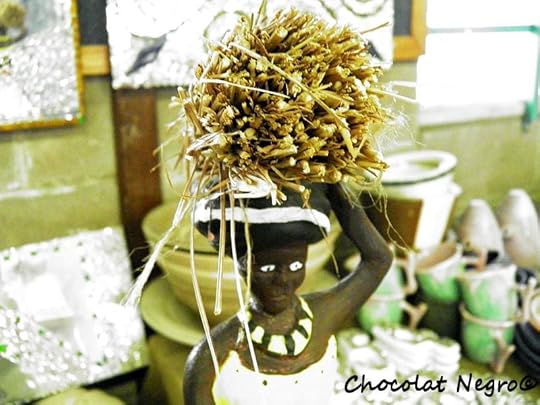
The tradition of the rural areas of the Eastern Cape is reflected in these sculptures
Looking at the sculptures one can see, that they have been inspired by daily life. The easy and simple things are shown here. The things, that have to be repeated day after day and that can be a burden sometimes are modeled into sculptures.
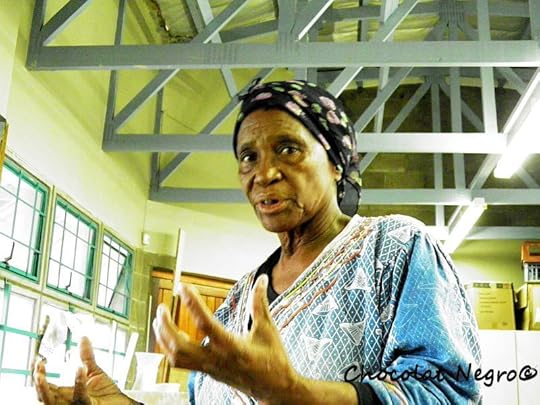
I do know nothing about art!
"In fact, I do know nothing about art! But I am very interested in art and all the things that are linked to it", says Patience.
It is hard to believe, that she grew up "knowing nothing about art", as she says.
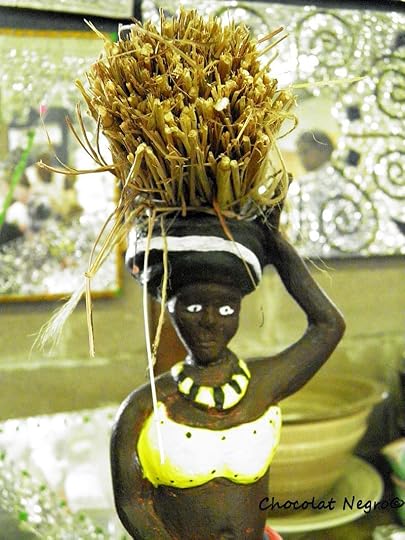

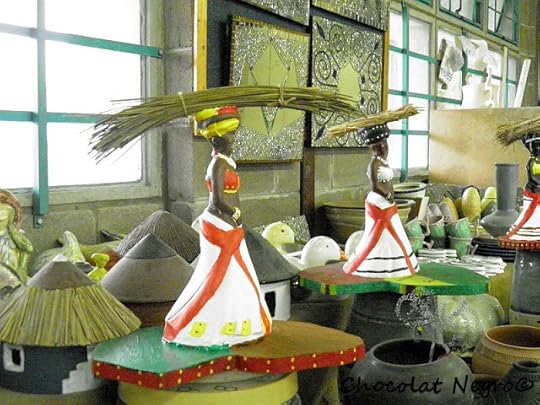
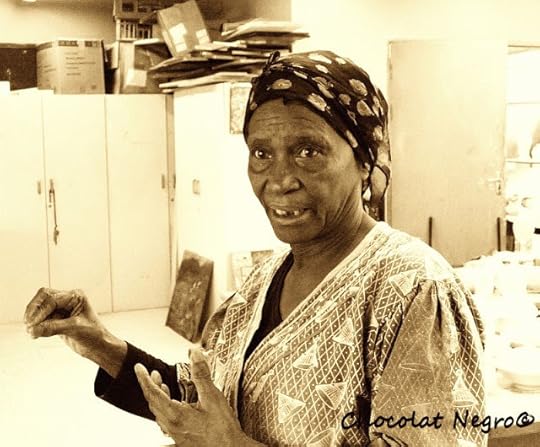
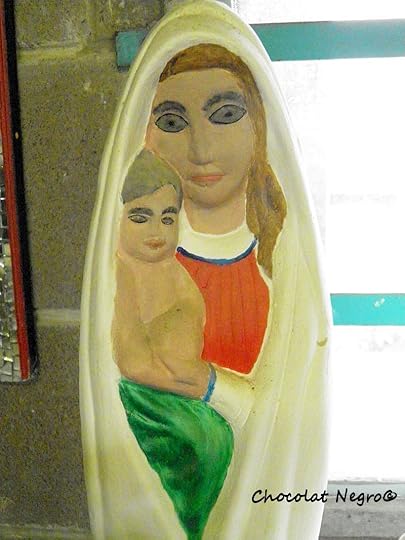
Religion is always there
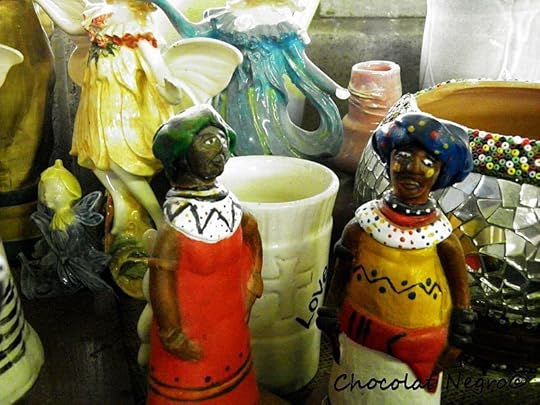
The traditional way of dressing

The traditional way of living
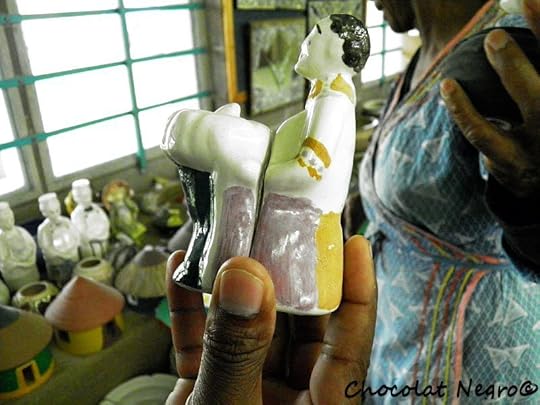
some humor
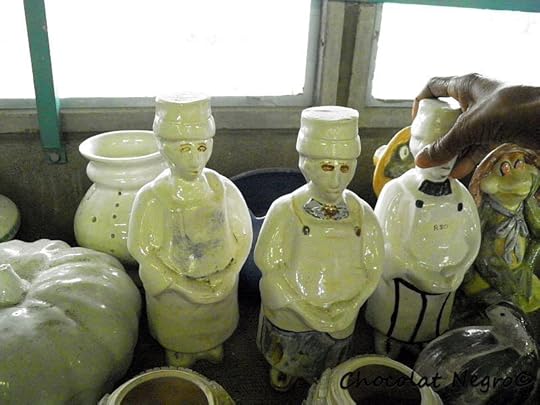
and something foreign
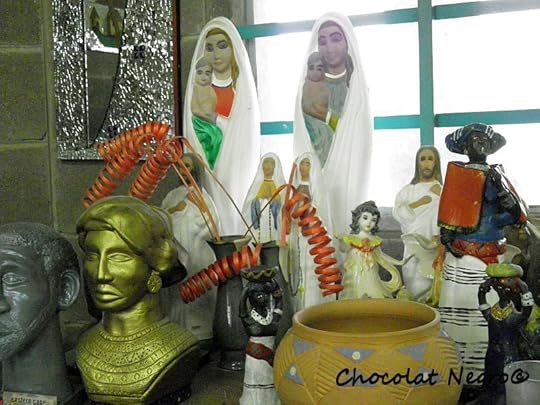
Makes the eclectic mix of todays South Africa
If you want to support the women or if you are on the look out for some beautiful gifts - Mdantsane is not that far.
Here are the ladies phone numbers:
Nomunde 0738522088
Zameka 0735794244
http://feeds.feedburner.com/blogspot/...

Published on January 11, 2013 00:16
December 23, 2012
Merry Christmas And Happy Holidays
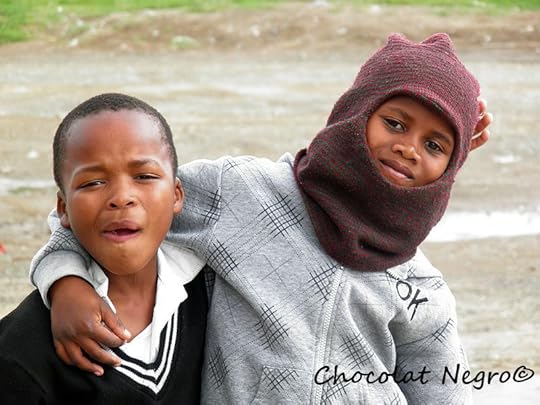
Happy Holidays To All Our Readers
The team of The Mdantsane Way Magazine wishes all our readers, young and old, South African and International a wonderful Christmas and Happy Holidays! Thank you for your support during 2012.
http://feeds.feedburner.com/blogspot/...

Published on December 23, 2012 22:32
December 21, 2012
Zingisa Zang Nkosinkulu - Welcome to COUCHLOCKPROJECTS
Today we are introducing you to the blog of Zingisa Zang Nkosinkulu -The Art of Zang.
Welcome to COUCHLOCKPROJECTS for
Arts development/ Exhibition/ Projects/ Hip Hop/Graffiti
Zang has contacted a couple of days ago The Mdantsane Way Magazine and left us his link. We followed up (it took a while, like always) but what we have seen is very interesting and stimulating!
Who is Zang? First of all he is born and bred in Mdantsane.
That makes him so interesting for us. And he is another perfect showcase of Mdantsane talent. Great talent, that has unfortunately left the township but we understand, you have to go where you can find a living.
Here is Zang in his own words:
Zang, living today in Pretoria in Gauteng was born and raised in the Township of Mdantsane, Eastern Cape.
He
acquired his diploma in Fine Art at NMMU, his B-Tech at WSU and is currently
studying towards his Master’s in Visual Art at UNISA. He worked at
Belgravia Art Centre while in East London as an art teacher for five
years.
After that he joined the team at UNISA Art Gallery as a gallery
assistant. Zang is a Visual/ Graffiti Artist with a Calling to use ART
as a Mediator to TRANCEND beyond conditions of his birth place.
To bring
new hope, share Creative Wisdom and Encourage youth to be ARTISTIC,
EDUCATED and Conscious Individuals. Art is a way he lives trying to
relate to the world in a CREATIVE and SPIRITUAL ways. Zang believes in
working in creative collaborative projects and workshops to develop the
Artistic Underdeveloped Communities.
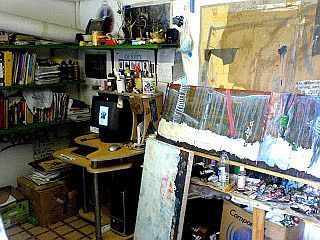
Zang's Studio from where he works. Images by Zang

Zang's Studio, work in progress, All Images are by Zang himself
That is what we also believe in. We see art as a tool of expression of the society we live in but also as one of the most powerful transformation tools. The place one is born into is not the place one is confined to for the rest of one's life.
We have taken a few images from Zang's blog but we do not have the intention to tell his story for him because he is already doing a good job telling his story himself and presenting himself and his art to the world. We really invite you to go over to his blog and have a look at his artwork!
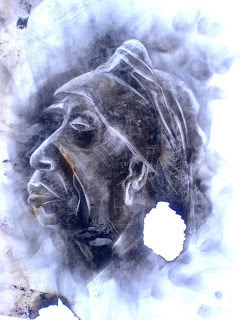
Laetitia
There is a series called Laetitia, a life drawing exercise he did with candle smoke and other materials. We have been absolutely impressed by this mixed media art piece.
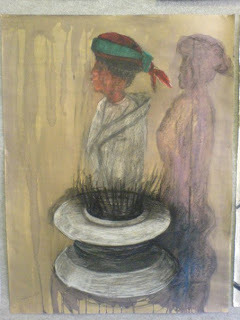
My Culture - My Technology- Vanishing Values Of The Xhosa Tradition
In my culture my technology he deals
with the theme of the culture of the Xhosa people, that is being treatened by
technology.
Zang says: "Technology is a symbol of change and technology weakens
things of value. For instance, now the are new circumsizing tools, that
are governmental or hospital tools. Now the traditional spear used to
remove foreskin will be forgotten. Now children sit down and play with
their cellphone they do not sit around the fire and wait for their
grandmother to tell them stories."
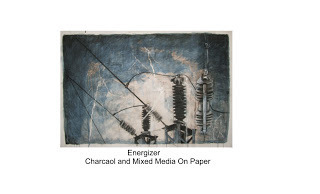
His artwork is of course for sale and as every artist in this world he needs the community's support. All his contact details are on his blog.
Zingisa Zang Nkosinkulu
http://feeds.feedburner.com/blogspot/...
Welcome to COUCHLOCKPROJECTS for
Arts development/ Exhibition/ Projects/ Hip Hop/Graffiti
Zang has contacted a couple of days ago The Mdantsane Way Magazine and left us his link. We followed up (it took a while, like always) but what we have seen is very interesting and stimulating!
Who is Zang? First of all he is born and bred in Mdantsane.
That makes him so interesting for us. And he is another perfect showcase of Mdantsane talent. Great talent, that has unfortunately left the township but we understand, you have to go where you can find a living.
Here is Zang in his own words:
Zang, living today in Pretoria in Gauteng was born and raised in the Township of Mdantsane, Eastern Cape.
He
acquired his diploma in Fine Art at NMMU, his B-Tech at WSU and is currently
studying towards his Master’s in Visual Art at UNISA. He worked at
Belgravia Art Centre while in East London as an art teacher for five
years.
After that he joined the team at UNISA Art Gallery as a gallery
assistant. Zang is a Visual/ Graffiti Artist with a Calling to use ART
as a Mediator to TRANCEND beyond conditions of his birth place.
To bring
new hope, share Creative Wisdom and Encourage youth to be ARTISTIC,
EDUCATED and Conscious Individuals. Art is a way he lives trying to
relate to the world in a CREATIVE and SPIRITUAL ways. Zang believes in
working in creative collaborative projects and workshops to develop the
Artistic Underdeveloped Communities.

Zang's Studio from where he works. Images by Zang

Zang's Studio, work in progress, All Images are by Zang himself
That is what we also believe in. We see art as a tool of expression of the society we live in but also as one of the most powerful transformation tools. The place one is born into is not the place one is confined to for the rest of one's life.
We have taken a few images from Zang's blog but we do not have the intention to tell his story for him because he is already doing a good job telling his story himself and presenting himself and his art to the world. We really invite you to go over to his blog and have a look at his artwork!

Laetitia
There is a series called Laetitia, a life drawing exercise he did with candle smoke and other materials. We have been absolutely impressed by this mixed media art piece.

My Culture - My Technology- Vanishing Values Of The Xhosa Tradition
In my culture my technology he deals
with the theme of the culture of the Xhosa people, that is being treatened by
technology.
Zang says: "Technology is a symbol of change and technology weakens
things of value. For instance, now the are new circumsizing tools, that
are governmental or hospital tools. Now the traditional spear used to
remove foreskin will be forgotten. Now children sit down and play with
their cellphone they do not sit around the fire and wait for their
grandmother to tell them stories."

His artwork is of course for sale and as every artist in this world he needs the community's support. All his contact details are on his blog.
Zingisa Zang Nkosinkulu
http://feeds.feedburner.com/blogspot/...

Published on December 21, 2012 22:56



